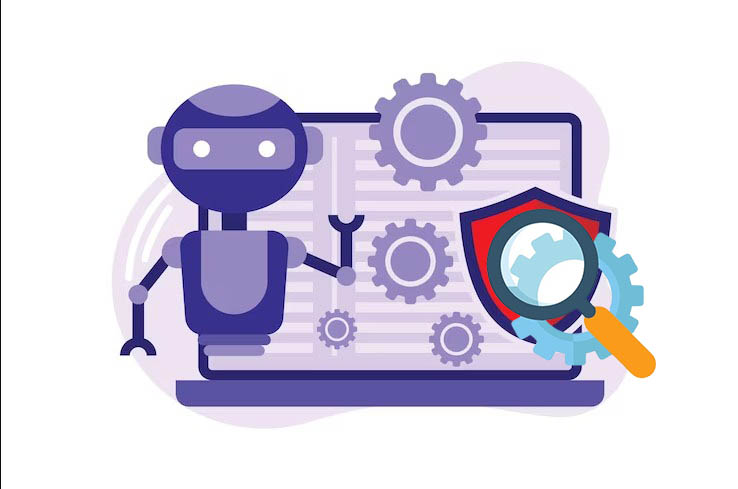The shift of legacy applications and data from mainframe systems to modern technologies would follow a vital period in the lifespan of such systems. This transition usually entails a change in the working environment from the monolithic mainframes to the greater flexible cloud or on-premises. The migration of the resources is not just a moving of the resources, it involves the fundamental transition that forces the stakeholders to carry out rigorous testing to make sure the function equivalence. The intention is that after a certain application has moved from mainframe systems, its operational effectiveness and performance be maintained and even possibly improved when it is running on a more modernized infrastructure.
Traditional GenAI-Driven Manual Testing Approach in Mainframe
Historically, mainframe-based solutions and tools have been noted as being lackluster in their urge to adopt QA automation testing services. In the 2019 global survey, the joint efforts of Compuware and Vanson Bourne were in narrow scope; the agreed result is that 7% of companies regarding mainframe applications are only adopters of automated test cases. This lack of willingness for automation testing will be immense, especially when it comes to applications being upgraded.
The Predicament of Manual Testing in Mainframe Environments
Among old-school methodologies, manual testing is rapidly becoming an anachronism that is wholly ineffective and non-resistant to mistakes in the case of organizational mainframe modernization. The growing complexity of software applications results from constantly changing business priorities, new customer requirements, or regulatory demands. Therefore, the testing of the applications becomes more and more rigorous. Every add-on including minor or big ones, must be carefully tested to distinguish if it harmonizes with all the existing features in the tool without unintentionally introducing negative consequences or disruptions.
While supercomputers still reign supreme in this age, it is important to know the challenges of repairing, updating, as well as upgrading the lags in the legacy systems through which businesses run globally. This condition with which such systems are facing, overloaded with technical debt and chipped with quick fixes years ago, is not only expensive for maintenance but also an obstacle in the way of business flexibility. While the situation as it stands is complex, the rising number of retirement-age workers within the export sector of the workforce is an additional factor that makes it all the more complicated.
This possesses competent power for sustaining the mentioned systems and frequently the lack of technical instructions would require transferring knowledge mostly by utilizing a person-to-person methodology implied by the fact that it is expensive and quite inefficient.
How AI-Powered Testing Enhances QA Automation Efficiency
AI-Driven Testing Boosts QA Efficiency by automating tedious tasks, optimizing test design, and enabling continuous testing practices.
However, the demand for mainframe modernization is also increasing; the prerequisites for this process are agility improvement as well as risk-mitigating features of applications. Although these initiatives are tough and risky for organizations, 74% of them fail to satisfy their original goals. Recent technologies like Cloud and service providers’ applications, hybrid cloud environments as well as modernization strategies that start with small portions of the mission, are viable, safe alternatives to modernization.
It is worth mentioning that although this problem exists, in general, modernizing COBOL is still demanding. Years of COBOL business thinking converted into automative machine language make it hard for us to extract, document, and port data to newer languages. The intelligently converted codes are correct but still not succinct or possibly distinctive, using outdated programming principles instead of modern ones. Of course, despite the benefits digital transformation solutions brings, the other side of the coin should not be overlooked. Custom software solutions that are tailor-made for specific needs are one of the tools of transformation, but they do not always fit into the variety of legacy systems, which in turn require the work of user debugging, testing and rewriting.
The artificial intelligence (AI) capabilities to deal with these issues are also getting recognized, such as to ensure consistency in automated code conversion for the purpose of retro-documentation and the testing processes in mainframe modernization.
Can Artificial Intelligence and Generative AI address the challenges?
Generative AI development services stand out as a major breakthrough as it goes beyond mainframe systems’ and traditional AI technologies’ boundaries. Not only is it about the provisioning of natural, minute-by-minute knowledge content for businesses and society to solve their problems, but it also has an enormous potential in re-engineering mainframe modernization. On account of GenAI’s specialty in getting a grasp of the meanings of legacy code semantics and by heuristic interpretation of enterprise engineering standards, the code transformation problems become much easier and the ability of the code encapsulation is also enhanced.
Several consulting firms, IT services, and Cloud Service Providers are exploring AI applications for code refactoring, generating visuals to demystify complex systems, and improving data migration. These innovations aim to bridge legacy systems with modern technologies, though many are still under development.
Benefits of GenAI-Driven Automation Testing
Efficiency:
GenAI accelerates the assessment, refactoring, and testing phases, allowing developers to focus on higher-impac
Quality Assurance:
Automated testing ensures that modernized applications meet quality and performance standards.
Risk Mitigation:
By reducing manual intervention, GenAI minimizes the risk of introducing defects during migration.
The Role of GenAI in Automation Testing
Enter GenAI. Generative AI can significantly enhance the automation testing process in mainframe modernization. Here’s how:
1. Assessment and Inventory:
-
- GenAI plays a crucial role in assessing the existing mainframe codebase. It quickly analyzes the code, identifies areas for improvement, and creates an inventory of application components.
- By understanding the scope of modernization, developers can plan the migration process more effectively. GenAI’s insights help prioritize which parts of the codebase need attention.
- The inventory provides a clear picture of the application’s architecture, dependencies, and potential challenges during migration.
2. Refactoring COBOL Business Services:
-
- COBOL (Common Business-Oriented Language) has been a staple in mainframe applications for decades. However, refactoring COBOL code for modern platforms is essential.
- GenAI assists in transforming COBOL business services into optimized Java code. This refactoring process ensures that the code remains maintainable, efficient, and compatible with the target environment.
- By automating the refactoring process, GenAI reduces the manual effort required and minimizes the risk of introducing errors.
3. Automated Testing Capabilities:
-
- GenAI provides powerful automated testing capabilities, revolutionizing the testing phase during mainframe modernization.
- Developers can rely on GenAI to generate test cases automatically based on the transformed code. These test cases cover various scenarios, ensuring comprehensive validation.
- By executing these automated tests, GenAI identifies potential issues, performance bottlenecks, and compatibility problems. It significantly reduces the risk of human error and accelerates the testing process.
Conclusion
In conclusion, GenAI-driven automation testing plays a crucial role in ensuring the enduring quality and performance of modernized mainframe applications. As organizations continue to modernize their IT systems, embracing automation becomes imperative for smoother transitions and successful outcomes in a rapidly evolving technological landscape.
Read More:
How to Build Ethical Thinking into Your Generative AI
Explore the ethical dimensions of generative AI development. Understand the potential and concerns surrounding this technology.



